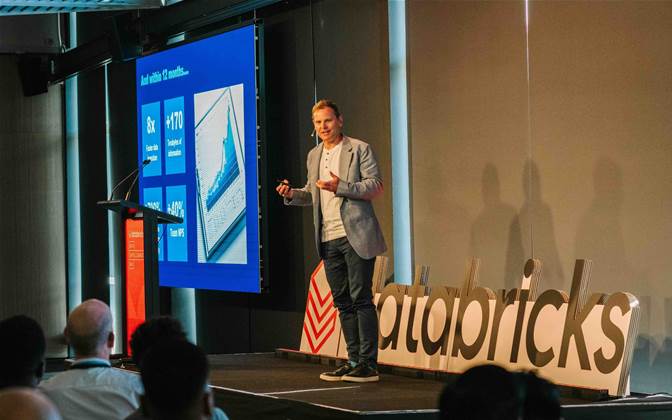Bupa wants to create a “digital health twin” for all customers – Software
Bupa has set a goal to create a “digital health twin” for every customer that can be used to power preventative and customer-centric conversations and care programs.

Bupa’s Ed Falconer (Image credit: Databricks)
Chief data officer Ed Falconer told a Databricks data intelligence day in Melbourne that the insurer has stood up and optimised a data platform over the past two years to underpin its ‘connected care’ strategy and vision.
“We want to create better experiences for our customers, [where] those experiences will typically turn into preventive and personalised healthcare,” Falconer said.
“Ultimately, what we want to be able to create is a digital health twin for each individual customer, which is not just backward looking but also predictive.
“When we talk about preventative care and wanting to put in place preventative programs, you want to predict issues, ailments or conditions that our patients may suffer from in the future, and then put in the care programs that mean [those conditions] actually don’t materialise.
“What we want to do is create this healthier, happier, long living customer base.”
This would not only benefit customers, but clinicians as well, according to Falconer.
“Our clinicians want to be able to spend more time talking and finding out better programs to put forward, rather than looking at data and trying to interpret it,” he said.
The data platform, based on Databricks, bridges data silos and consolidates multiple older data warehouses.
The legacy data architecture had previously been a “limitation” on Bupa’s ability to “strive for … customer-centricity”, necessitating the transformation.
Databricks has been set up as a “modern, safe, secure, single source of truth” for the insurer, managing role-based access to data and powering data-driven initiatives.
Falconer said that it became clear during the transformation that the company wasn’t making fast-enough progress.
“The demand within the business and industry [for data] was increasing, and we were just finding ourselves a little bit too slow [and that it was] little bit too complex to do things at a rapid pace,” Falconer said.
“One of the key complaints was there’s not much data in the new data platform that we’re building”, which encouraged some users not to make the transition.
Falconer said that a number of technical and cultural fixes were pursued, particularly over the past year.
He did not go into the technical fixes, but said that some of the insurer’s efforts around “organising for speed” are built on more data engineering resources – in his words, “More people actually doing the tasks and less people standing around telling people what tasks to do”.
The project team also committed to fewer things and focused on bedding those down.
“There’s temptation to do a lot due to the scale of things that need to get done, but we reduced that down to ‘what are the big things aligned to our strategy that we should be focusing on first to have maximum impact?’.”
Additionally, the project team engaged internal subject matter experts (SMEs) more closely to reduce data silos, and had some assistance from Databricks on some integrations with other systems.
“As a result of those four things, and all of the technical things that we implemented, over a 12 month period we ended up going eight times faster in terms of moving all of the data that we had into the platform, [with] hundreds of terabytes of data flowing through from the old systems into the new systems,” Falconer said.
Staff engagement and buy-in is also up.
Falconer said that Bupa wanted systems that supported staff to practice their “craft” – whether that is clinical, data analytics or another discipline – and that there is evidence the system is helping staff and clinical personnel to meet these objectives.
“It’s about how we help our people to bring their craft and their best selves to work in order to meet our purpose,” he said.
The platform is also now ready to bring “all the predictive and descriptive elements and insights together against an individual customer, in a controlled, safe and secure [way]” to meet the insurer’s broader customer-centric goals.
Falconer said that “hundreds” of use cases for the platform had been identified that served this customer-centric purpose.
He described one service-oriented use case, which could use data to determine whether or not someone is visiting a dental practice, and if not, to push them towards one operated by Bupa.
A second use case, which appears to reflect the digital health twin ambition, is “to have predictions of the risk of chronic conditions”, which could be used to “move us towards preventative care.”
Falconer also saw an opportunity to use generative AI to summarise data about a customer in a meaningful way, especially for clinical purposes.
“Sometimes, if you’re collecting all of this information, you just need a summary of it and a recommendation of what you should be pursuing,” he said.
“Especially if you’re a clinician with 15 minutes of opportunity to discuss the challenges and the problems that are faced by the patient, how do you streamline it and go quick and make [good] decisions?”










